Hardwoods
Hardwoods are timber of broadleaved species (Angiospermae), characterised by features that make it possible to distinguish them from softwoods. It is especially more complex structure, often visible rays or pores. More complex structure usually results in more interesting figure. It has nothing to do with the hardness of the timbers from this group. It comprises ring-porous hardwoods, with quite distinct annual rings borders, and diffuse-porous hardwoods, with less visible annual rings borders.
FALSE ACACIA, BLACK LOCUST
Latin name: Robinia pseudoacacia L.
Czech name: Akát
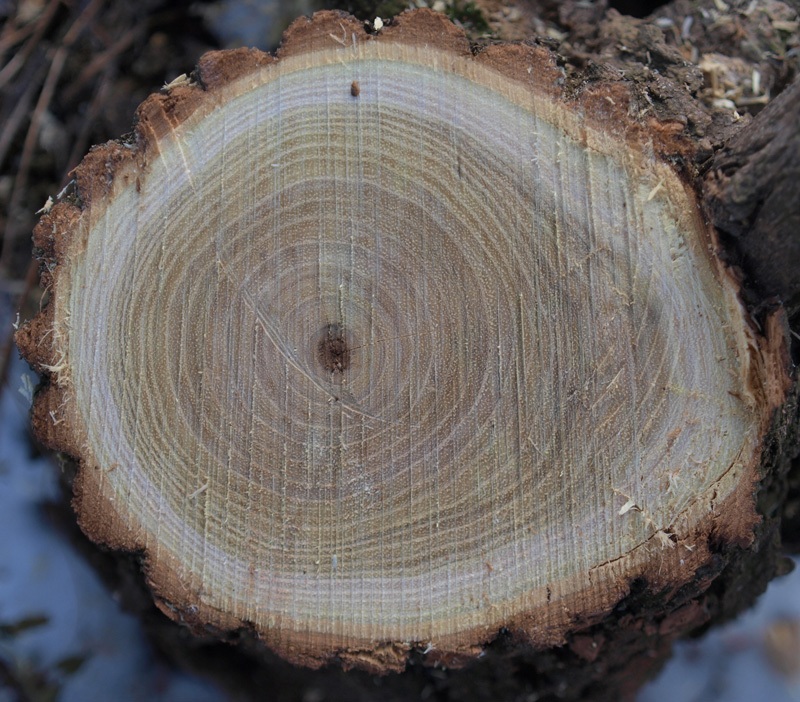
Appearance on the sections:
| Group of timbers: | Hardwoods |
| Vessels: | Ring-porous distribution Vessels in the latewood visible on the transverse surface as small light dots.. |
| Heartwood: | Present |
| Rays: | Visible only on the radial surface |
| Colour: | Sapwood yellowish, heartwood yellowish-green to golden-brown |
| Hardness and weight: | Hard and heavy It is one of the hardest and heaviest timbers in the Czech republic. |
| Another features: | Sapwood is very narrow, only few annual rings wide. Abrupt transition from the heartwood to the sapwood. Annual rings borders are distinct. Timber is lustrous. |
| Features of interest: | It is one of our timbers with the most resistance against weather conditions, fungi and pests. That is the reason it is used often outdoors. |
BIRCH
Latin name: Betula alba L.
Czech name: Bříza
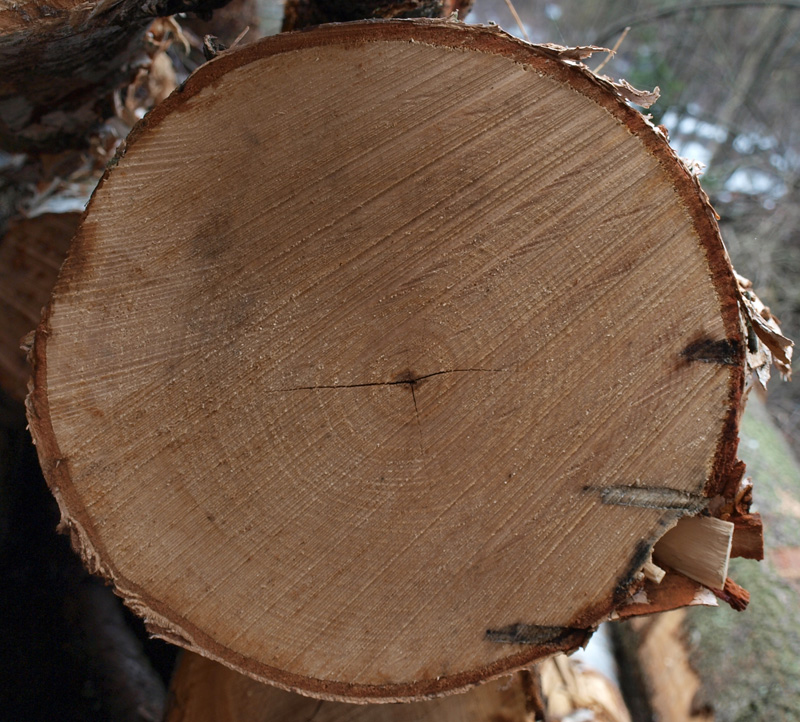
Appearance on the sections:
| Group of timbers: | Hardwoods |
| Vessels: | Diffuse-porous distribution Vessels are quite small with poor visibility. On the transverse surface to some extent visible as small light dots. |
| Heartwood: | Absent |
| Rays: | Visible only on the radial surface |
| Colour: | Whitish with yellowish or reddish shade |
| Hardness and weight: | Medium hard and medium heavy |
| Another features: | Frequent occurrence of the pith flecks, visible on the longitudinal surfaces and even on the transverse surface. Annual rings borders are not very distinct. It is generally straight-grained and of fine, even texture. |
| Features of interest: | In some trees the false heartwood can appear. Grain irregularities can result in highly decorative and valuable figure, as in the case of Masur (Karelian) birch. |
BEECH
Latin name: Fagus sylvatica L.
Czech name: Buk
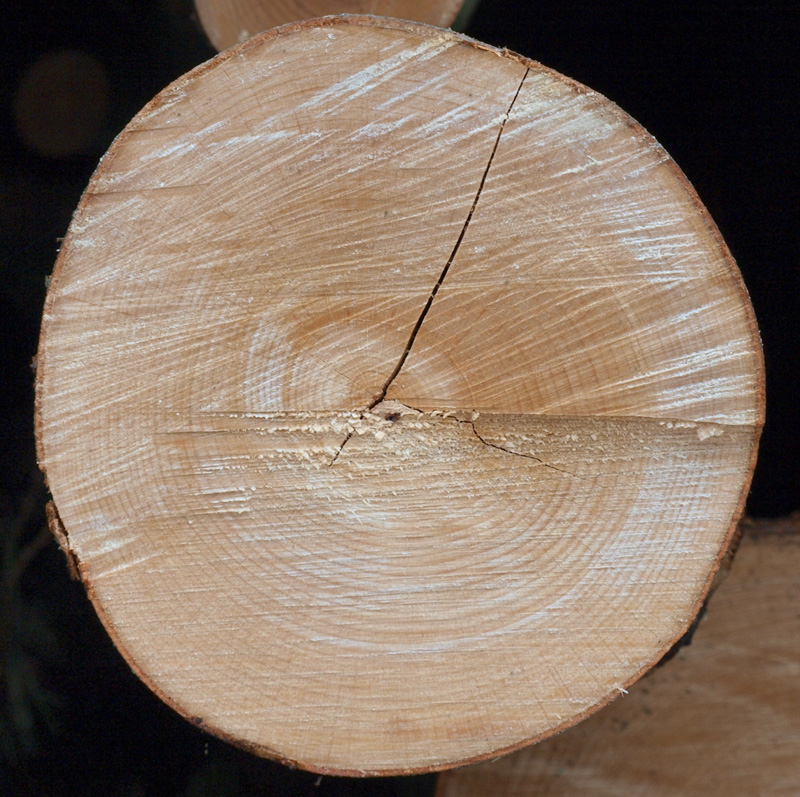
Appearance on the sections:
| Group of timbers: | Hardwoods |
| Vessels: | Diffuse-porous distribution Vessels are invisible to the naked eye. |
| Heartwood: | Absent |
| Rays: | Well visible rays of characteristic appearance on the all surfaces ( transverse, tangential and radial). |
| Colour: | Pink |
| Hardness and weight: | Hard and medium heavy |
| Another features: | Annual rings borders are distinct. |
| Features of interest: | Possible occurrence of the false heartwood, especially in old trees. |
OAK
Latin name: Quercus robur L., Quercus petraea Liebl.
Czech name: Dub
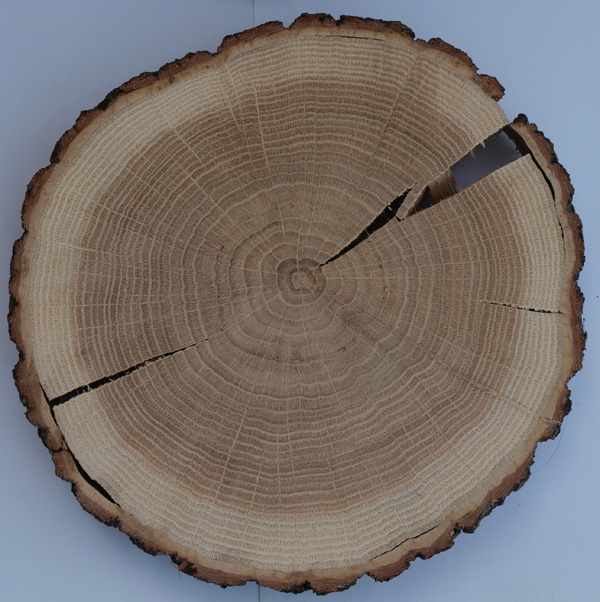
Appearance on the sections:
| Group of timbers: | Hardwoods |
| Vessels: | Ring-porous distribution Groups of vessels in the latewood are visible on the transverse surface as light radial bands |
| Heartwood: | Present |
| Rays: | Rays visible on the all surfaces (transverse, tangential and radial) Ray great and well visible, one of the biggest rays from the Czech species. |
| Colour: | Sapwood light brown, heartwood yellowish-brown to dark brown |
| Hardness and weight: | Hard and medium heavy |
| Another features: | Sapwood is narrow, heartwood is wide. Abrupt transition from the heartwood to the sapwood. Annual rings borders are distinct. Fresh wood has characteristic odour because of high content of tannins. |
| Features of interest: | Timber stored under water for a long time gets dark, up to black colour. The pith is star-shaped on the cross-section. Chemical substances in wood react with iron resulting in discoloration. Except for attractive figure on the tangential and the radial surfaces the burr is also very decorative. |
HORNBEAM
Latin name: Carpinus betulus L.
Czech name: Habr
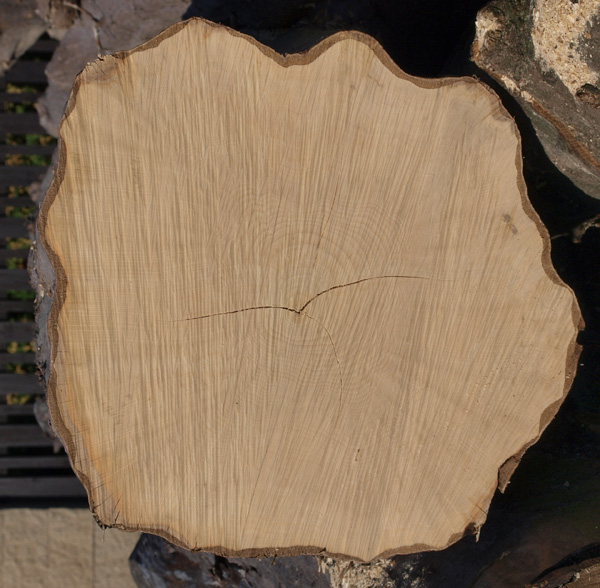
Appearance on the sections:
| Group of timbers: | Hardwoods |
| Vessels: | Diffuse-porous distribution Vessels are invisible to the naked eye. |
| Heartwood: | Absent |
| Rays: | Well visible rays on the all surfaces (transverse, tangential). One of the biggest rays from the Czech species. |
| Colour: | Whitish with grey or yellowish shade |
| Hardness and weight: | Hard and heavy It belongs among the hardest and heaviest timbers in the Czech republic. |
| Another features: | Annual rings undulated (as visible on the transverse surface) and less distinct. Timber is dull. Irregular grain and fine, even texture. |
| Features of interest: | Owing to swirl the fibres are oriented irregularly in a stem and the shape of the stem on the cross-section differs from circle. |
ASH
Latin name: Fraxinus excelsior L.
Czech name: Jasan
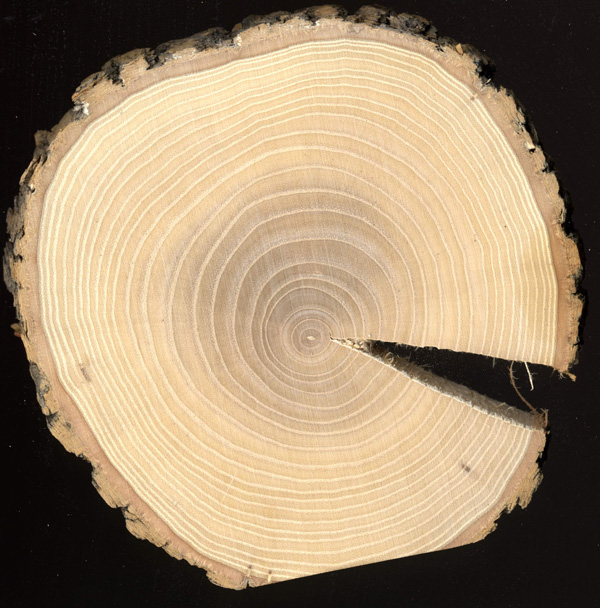
Appearance on the sections:
| Group of timbers: | Hardwoods |
| Vessels: | Ring-porous distribution Vessels in the latewood are nearly invisible on the transverse surface to the naked eye. |
| Heartwood: | Present The heartwood is created in older trees. In young trees is usually absent. |
| Rays: | Visible only on the radial surface |
| Colour: | Sapwood whitish to light brown, heartwood dark brown |
| Hardness and weight: | Hard and medium heavy |
| Another features: | Sapwood is wide. Annual rings borders are distinct. Straight-grained and even in texture. |
| Features of interest: | Peanut shell figure or curly figure is very decorative and valuable. |
MAPLE
Latin name: Acer pseudoplatanus L., Acer platanoides L.
Czech name: Javor
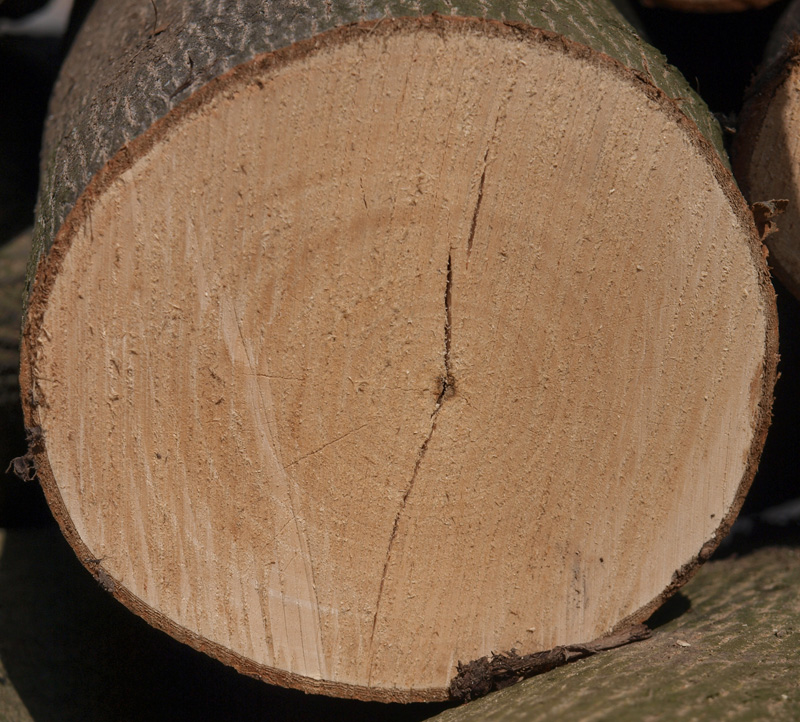
Appearance on the sections:
| Group of timbers: | Hardwoods |
| Vessels: | Diffuse-porous distribution Vessels are invisible to the naked eye. |
| Heartwood: | Absent |
| Rays: | Visible only on the radial surface |
| Colour: | Whitish, yellowish to pinkish |
| Hardness and weight: | Medium hard and medium heavy |
| Another features: | Timber is lustrous. Annual rings borders are distinct. Occasional occurrence of green pith flecks. |
| Features of interest: | In some trees the false heartwood can appear. Curly figure or bird’s eye figure is very decorative and valuable. |
ELM
Latin name: Ulmus montana Stok., Ulmus laevis Pall., Ulmus carpinifolia Gled.
Czech name: Jilm

Appearance on the sections:
| Group of timbers: | Hardwoods |
| Vessels: | Ring-porous distribution Because of the grouping into tangential bands the vessels in the latewood are visible on the transverse surface as light waves. |
| Heartwood: | Present |
| Rays: | Visible only on the radial surface |
| Colour: | Sapwood whitish to yellowish, heartwood (depending on the species) light brown to chocolate |
| Hardness and weight: | Medium hard and medium heavy |
| Another features: | Sapwood width is quite variable, depending on the species. Annual rings borders are distinct. |
| Features of interest: | Burr is very decorative and valuable. |
BASSWOOD, LIME
Latin name: Tilia cordata Mill., Tilia platyphylla Scop.
Czech name: Lípa
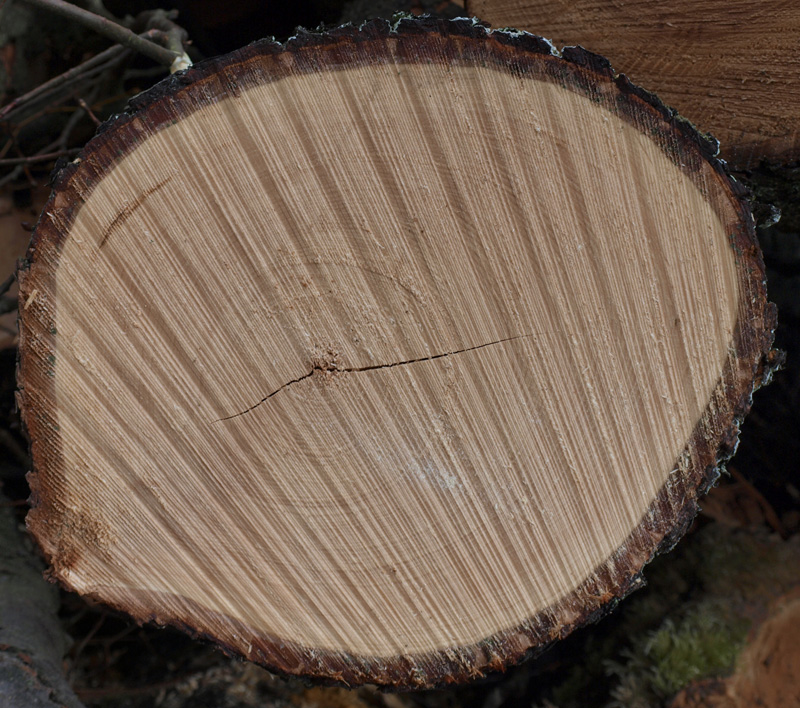
Appearance on the sections:
| Group of timbers: | Hardwoods |
| Vessels: | Diffuse-porous distribution Vessels are invisible to the naked eye. |
| Heartwood: | Absent |
| Rays: | Visible only on the radial surface |
| Colour: | Whitish, yellowish to reddish |
| Hardness and weight: | Soft and light |
| Another features: | Annual rings borders less distinct. Texture uniform with little or no figure. Old timber often features presence of greenish streaks. |
| Features of interest: | Characteristic, not very distinct, odour. Compared to other timbers the odour is long-lasting. |
ALDER
Latin name: Alnus glutinosa Gaertn., A. incana Moench
Czech name: Olše
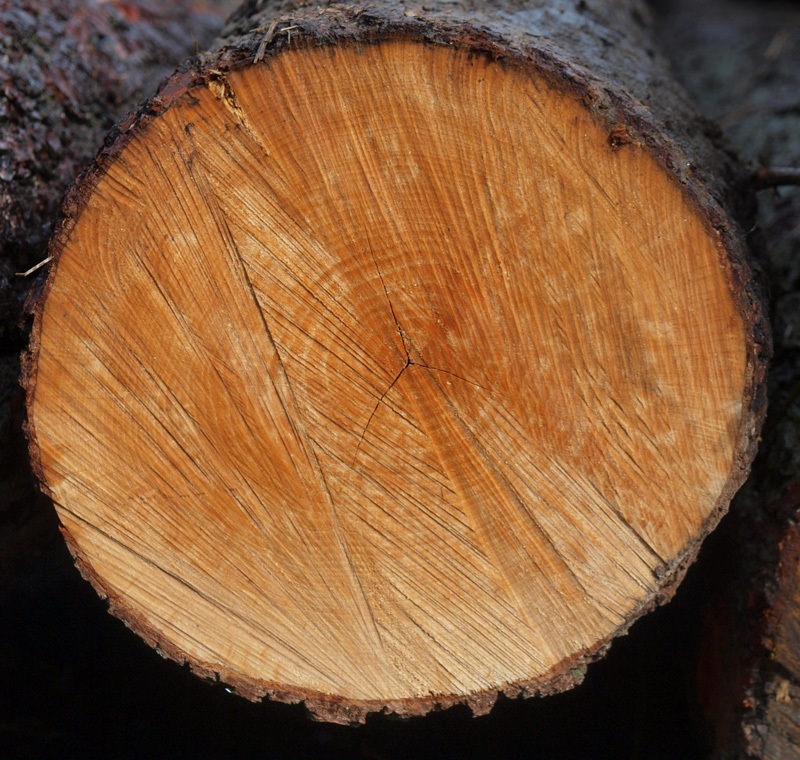
Appearance on the sections:
| Group of timbers: | Hardwoods |
| Vessels: | Diffuse-porous distribution Vessels are invisible to the naked eye. |
| Heartwood: | Absent |
| Rays: | Rays visible on the all surfaces ( transverse, tangential, radial). Rays are quite great and well visible. |
| Colour: | Pinkish to light orange |
| Hardness and weight: | Mostly soft and light |
| Another features: | Characteristic occurrence of the pith flecks (transverse surface, radial surface), visible on the all surfaces. Annual rings borders less distinct. Texture uniform with little or no figure. |
| Features of interest: | Possible occurrence of the false heartwood. Timber of the freshly cut tree has conspicuous orange colour. The pith has triangular shape on the cross-section. |
WALNUT
Latin name: Juglans regia L.
Czech name: Ořech
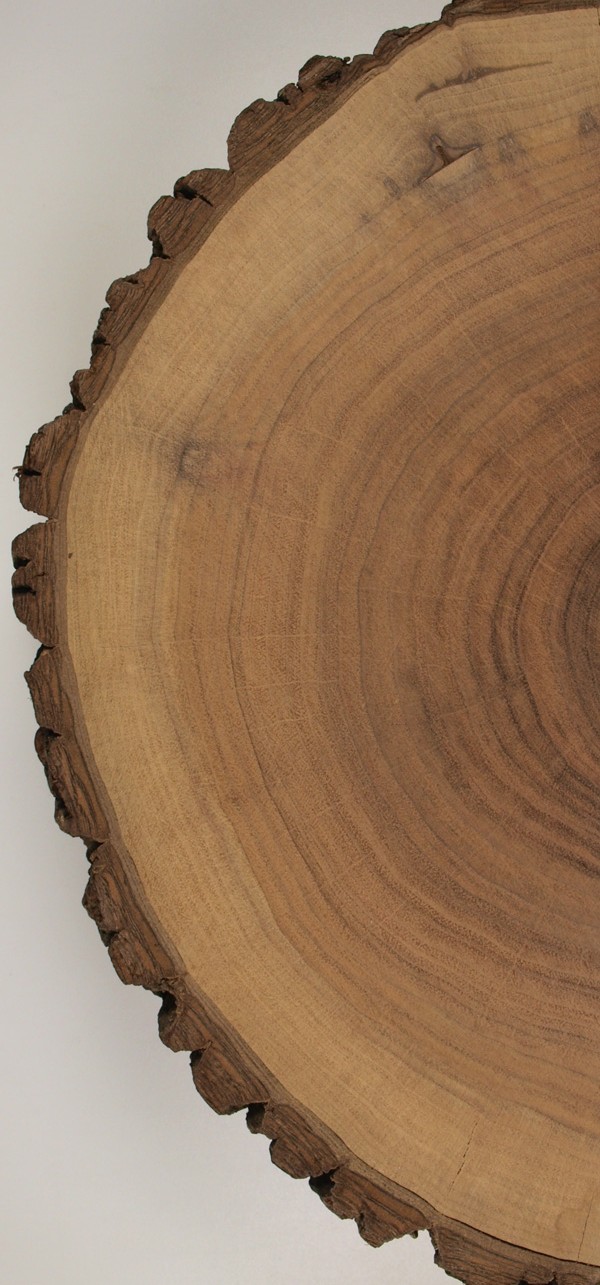
Appearance on the sections:
| Group of timbers: | Hardwoods |
| Vessels: | Diffuse-porous distribution In the terms of porosity walnut can be regarded as semi-ring-porous timber. Vessels well visible to the naked eye, compared to remaining Czech diffuse-porous timbers (transverse surface, tangential surface). |
| Heartwood: | Present |
| Rays: | Visible only on the radial surface |
| Colour: | Sapwood greyish-white, Heartwood greyish-brown to greyish-black |
| Hardness and weight: | Medium hard and medium heavy |
| Another features: | The heartwood has irregular dark streaks. Transition between the sapwood and the heartwood is gradual. Annual rings borders are less distinct. Characteristic odour is not very distinct. |
| Features of interest: | Very decorative and valuable timber. Especially walnut burr is very attractive. |
PLUM
Latin name: Prunus domestica L.
Czech name: Švestka
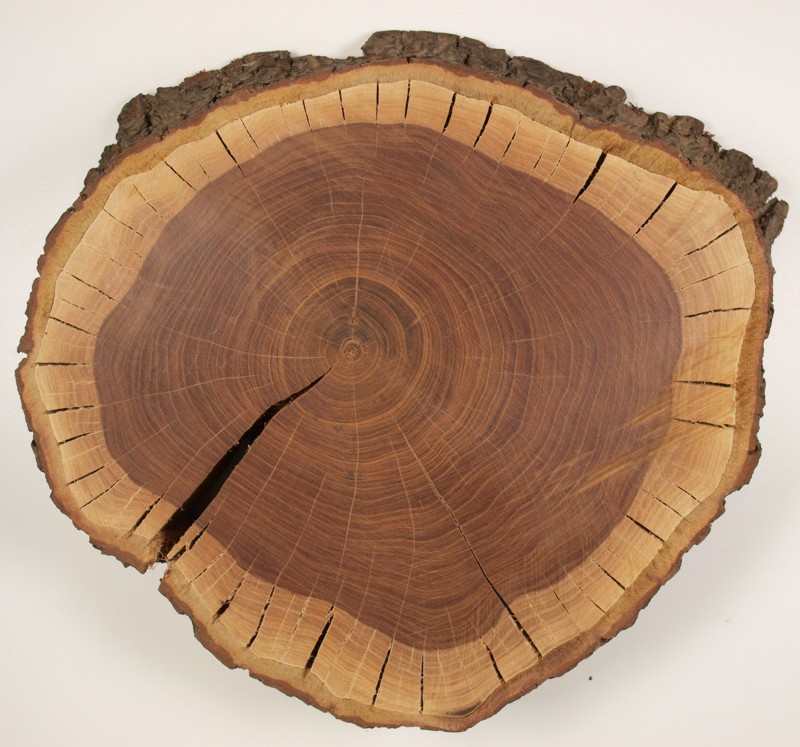
Appearance on the sections:
| Group of timbers: | Hardwoods |
| Vessels: | Diffuse-porous distribution In the terms of porosity plum can be regarded as semi-ring-porous timber. Vessels are invisible to the naked eye. |
| Heartwood: | Present |
| Rays: | Well visible especially on the radial surface |
| Colour: | Sapwood pinkish, heartwood dark reddish-brown with violet shade |
| Hardness and weight: | Medium hard and medium heavy |
| Another features: | The sapwood is narrow and it is clearly differentiated from the heartwood. Transition between the sapwood and the heartwood is abrupt. Annual rings borders are distinct. |
| Features of interest: | - |
POPLAR
Latin name: Populus nigra L., P. alba L.
Czech name: Topol
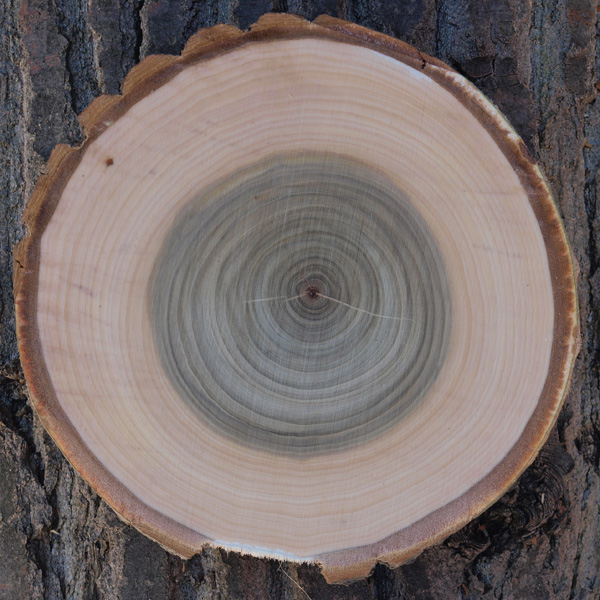
Appearance on the sections:
| Group of timbers: | Hardwoods |
| Vessels: | Diffuse-porous distribution Vessels are invisible to the naked eye. |
| Heartwood: | Present In freshly cut trees distinct, later less distinct. |
| Rays: | Invisible to the naked eye |
| Colour: | Sapwood yellowish, heartwood yellowish-brown with reddish or greenish shade |
| Hardness and weight: | Soft and light One of our softest and lightest timbers. |
| Another features: | Wide annul rings. Annual rings borders are less distinct. Freshly cut timber has characteristic odour. |
| Features of interest: | It is typically straight-grained, with fine and even texture, not very attractive. Poplar burr is but decorative. The pith is of pentagonal shape on the cross-section. |
CHERRY
Latin name: Cerasus avium (L.) Moench.
Czech name: Třešeň
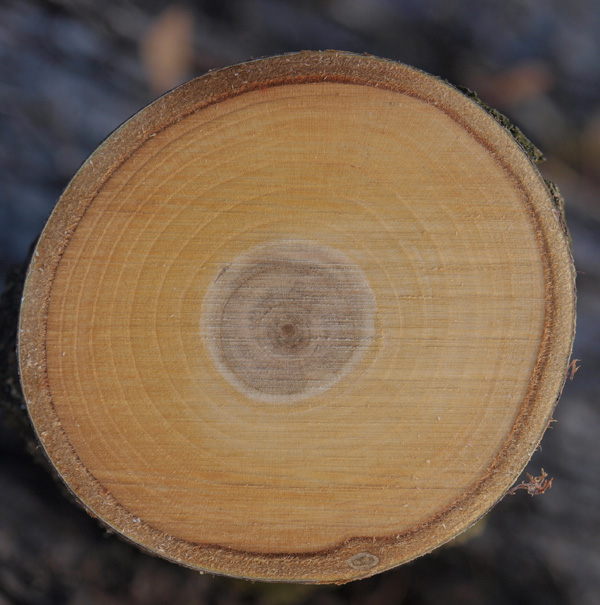
Appearance on the sections:
| Group of timbers: | Hardwoods |
| Vessels: | Diffuse-porous distribution In the terms of porosity cherry can be regarded as semi-ring-porous timber. Vessels are invisible to the naked eye. |
| Heartwood: | Present |
| Rays: | Well visible on the radial surface |
| Colour: | Sapwood pinkish, heartwood is reddish-brown |
| Hardness and weight: | Medium hard and medium heavy |
| Another features: | The heartwood features often presence of greenish streaks. Timber has silky lustre. The sapwood is quite narrow, clearly differentiated from the heartwood. Annual rings borders are well visible. No noticeable odour. |
| Features of interest: | Due to its decorative figure it is popular for furniture making. |
WILLOW
Latin name: Salix alba L., S. fragilis L.
Czech name: Vrba
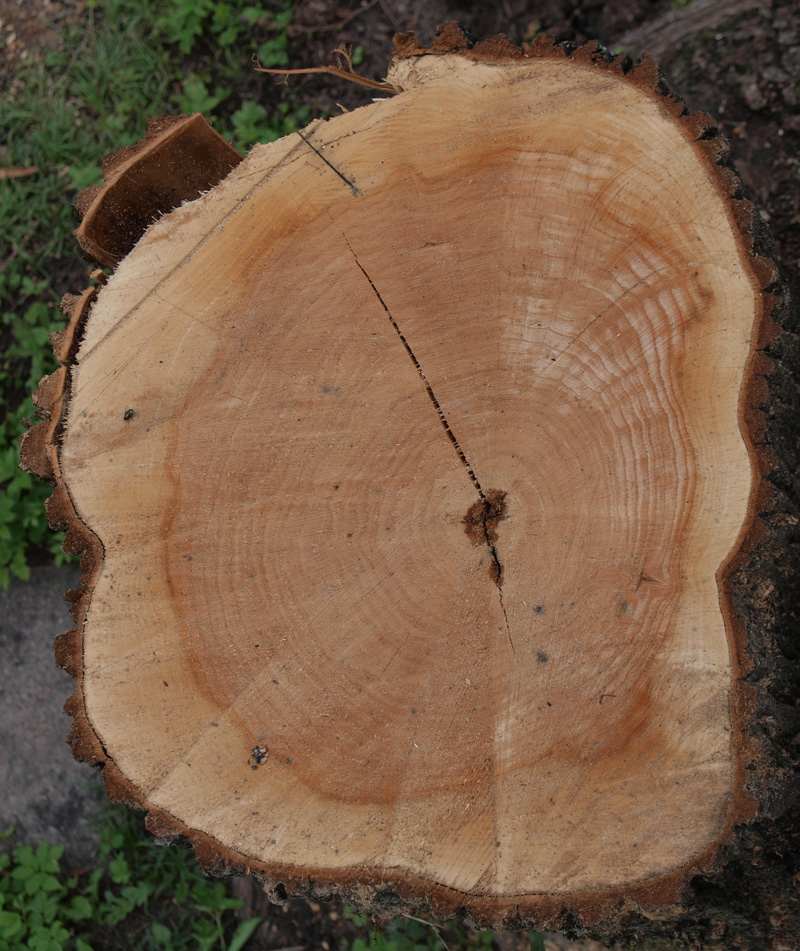
Appearance on the sections:
| Group of timbers: | Hardwoods |
| Vessels: | Diffuse-porous distribution Vessels are invisible to the naked eye. |
| Heartwood: | Present It is not very clearly differentiated from the sapwood. |
| Rays: | Invisible to the naked eye |
| Colour: | Sapwood yellowish, heartwood yellowish-brown to yellowish-red |
| Hardness and weight: | Soft and light One of our softest and lightest timbers. |
| Another features: | Wide annul rings. Annual rings borders are less distinct. Small knots are frequent. Occasional presence of the pith flecks. |
| Features of interest: | It is usually straight-grained, with a fine and even texture. The timber is very similar to that of poplar. |
